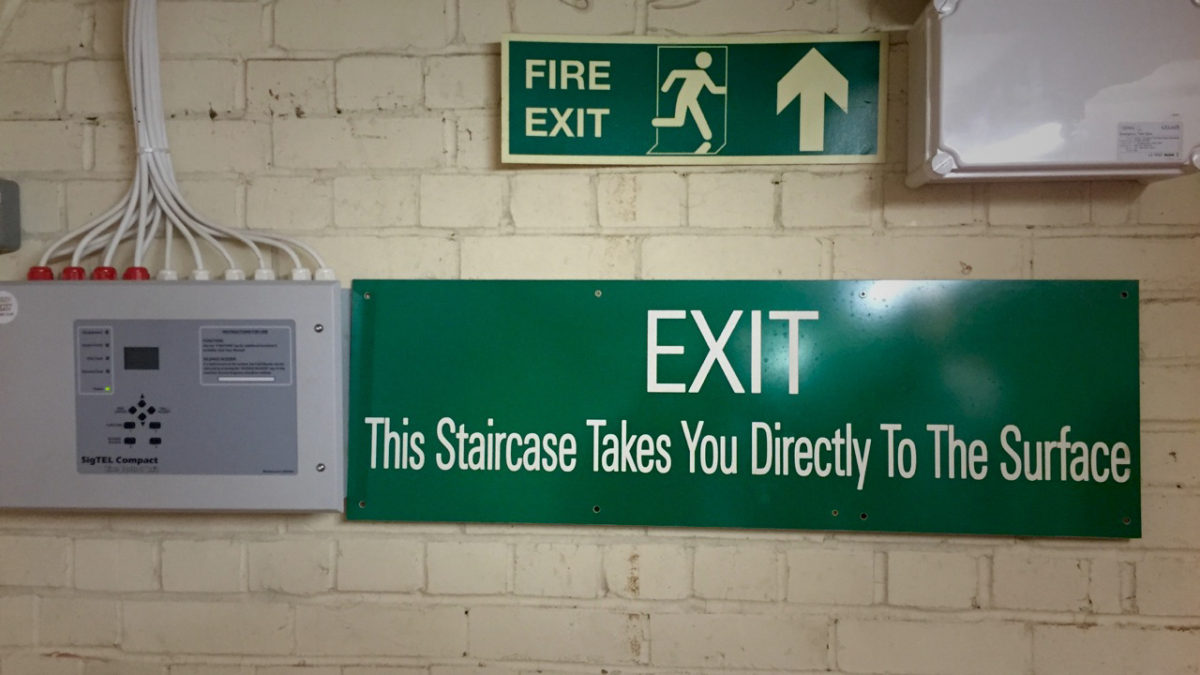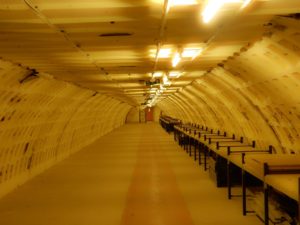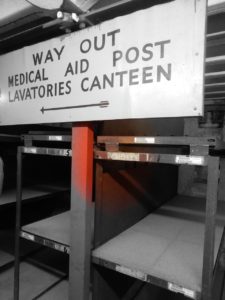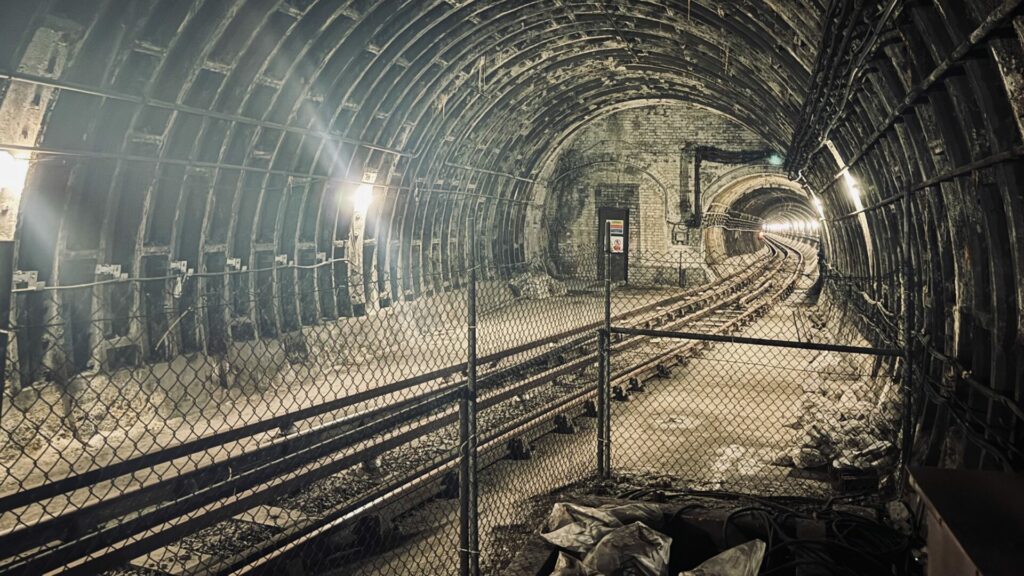
In 2015, we embarked on our first ‘Hidden London’ tour, exploring the former Jubilee Line platforms at Charing Cross. It was fascinating to see these platforms, now hidden from public use, preserved in a time warp. It felt surreal to stand just beyond a ventilation grille, watching passengers and trains in the active station while feeling both like a spy and an archaeologist. The knowledgeable guides, who shared the rich history of London’s underground, made the experience even more engaging.
Since then, we’ve followed up with tours of other disused stations, such as Aldwych and Down Street, as well as behind-the-scenes visits to LU headquarters at 55 Broadway and unused parts of stations like Euston, Piccadilly Circus, Moorgate, Highgate, and Shepherd’s Bush. During the lockdown, we even took a virtual tour of the former tram tunnels under Kingsway.
During one of these tours, we learned that, at the end of the nineteenth century, London County Council initiated a redevelopment scheme in the Aldwych and Kingsway areas. This project aimed to clear slums, stimulate development, and create broad boulevards, which ultimately led to significant changes in the area. As part of this redevelopment, the Great Northern Railway management extended their planned railway to the Strand, naming it the Great Northern & Strand Railway. However, construction was delayed due to insufficient funds. When the plans finally materialised, Holborn station opened on 15 December 1906 on the Great Northern, Piccadilly, and Brompton Railway. The extension to the Strand came later and was eventually constructed as a branch line rather than a terminating station on what is now known as the Piccadilly Line.
Earlier this year, the London Transport Museum advertised a Hidden London tour of Holborn station, and I eagerly signed up. Today, we met a group of fellow enthusiasts around 10 am outside the station. It seemed everyone in our group had previously been on one of the ‘Hidden’ tours.
During the Aldwych tour, we learned that the branch line closed on 30 September 1994 due to the estimated £7 million upgrade costs, which would have supported just 450 trips a day. As the system was considered to be in managed decline, the expense couldn’t be justified. This closure left two platforms unused, and we had the opportunity to explore them.
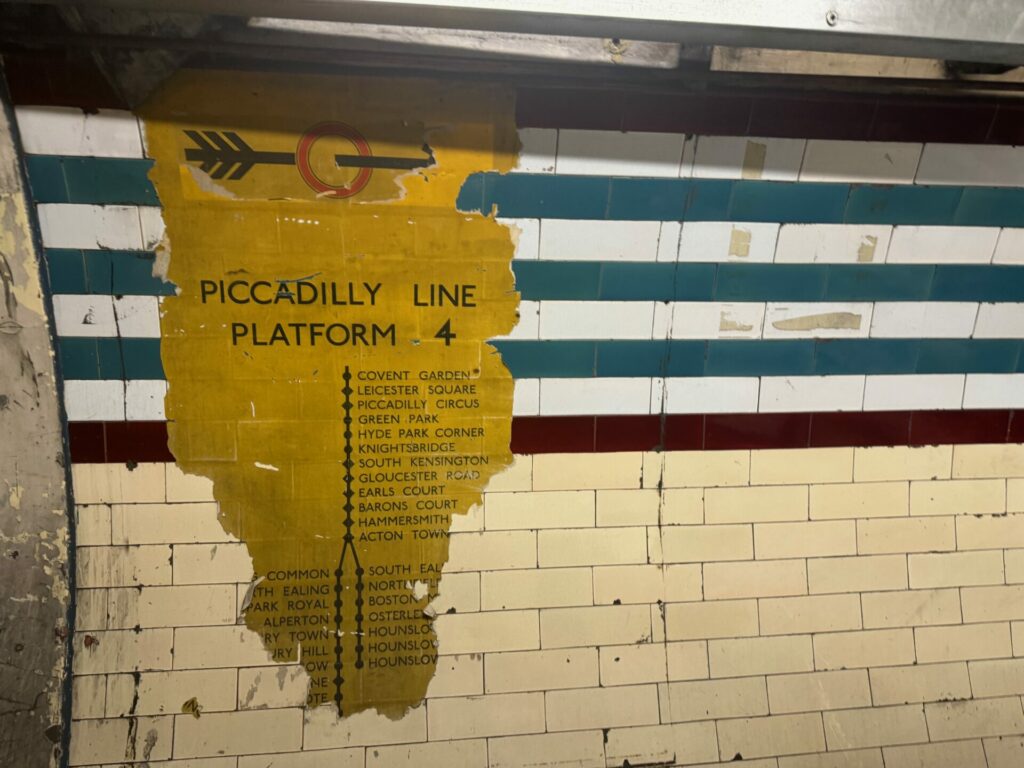
One of the platforms remains recognisable, featuring the sole remaining ‘Holborn (Kingsway)’ roundel attached to the wall. Like other disused platforms we’ve visited, it occasionally serves as a mock-up for experimental equipment and signage. After its closure, it was also used as a filming location, notably for the music video of the 80s classic “New Song” by Howard Jones.
We also learned about an experiment involving water pipes to cool the underground and saw test signage showing a ‘St Paul’s’ platform edge sign above the familiar Holborn roundel. Pre-war Piccadilly Line wayfinding signs were also on display, and we peered down the still-lit line to Aldwych. Sadly, the station’s ‘bird’s nest’ control room, once used for early CCTV tests, is no longer there.
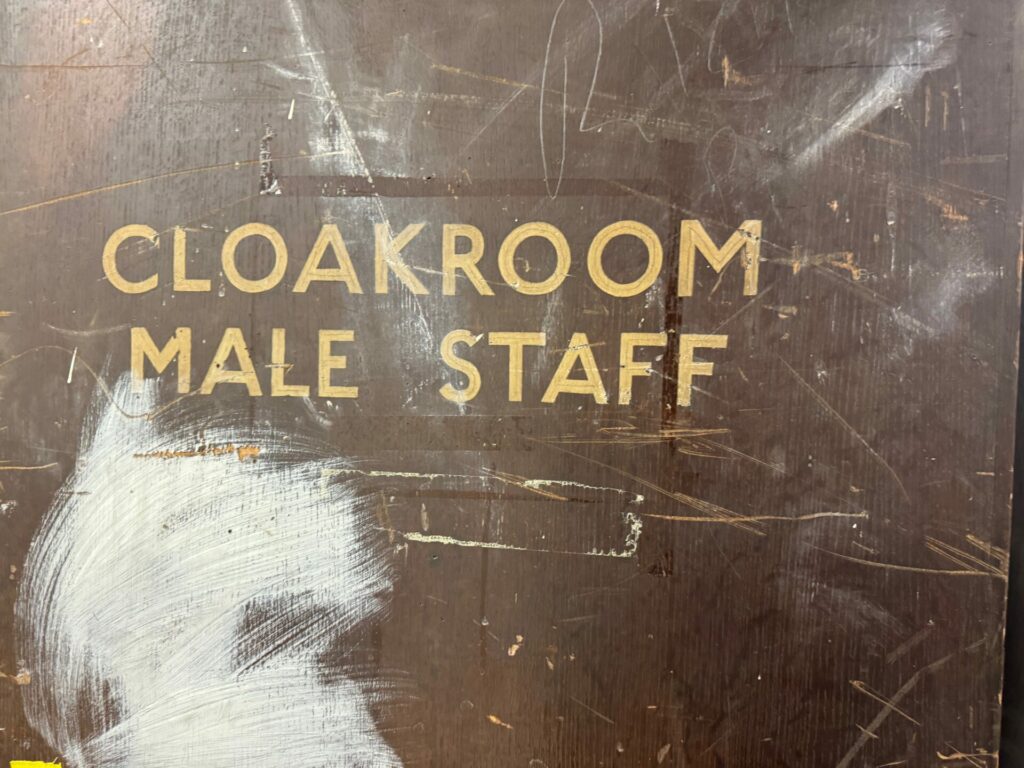
The other platform had closed much earlier, as the branch line was underused from the start. Through a flood defence door installed during the war, we saw the crossover lines where trains could be directed down one of two tunnels towards the Strand. Much of this platform had been filled in, and one of the tunnels was repurposed as wartime art storage and never returned to service. The filled-in track bed was used as accommodation and shelter during the Blitz but is now a concrete walkway. A corridor of rooms, once used as a cloakroom and later by a model railway group, remains empty and unused. It’s always fascinating to see how much under-utilised space lies beneath London.
As I wandered through these hidden spaces, I couldn’t help but wonder if a branch line from Strand might have gained popularity as tube usage surged in the current millennium. Could it have been viable with an extension beyond Strand to Waterloo and the south?
There are still unfunded plans for station improvements and a new entrance to ease congestion. Of course, the station has seen upgrades before. It was connected to the Central Line on 25 September 1933, the day after the British Museum station closed. Unfortunately, it’s unlikely there will be a Hidden London tour of that station, as the above-ground facilities have apparently been demolished.

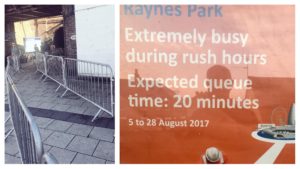 And then came Monday morning. The alarm went off 45 minutes earlier and, with some trepidation, I made my way to the station. There was some of those crowd control people I previously mentioned, lined-up to help the masses form an orderly queue. But there was a problem with all the planning: there were no crowds. For most of the time, I’ve had a seat on a partially empty train at a time I was warned I’d have to queue. Pulling into Clapham Junction station at around 7am would usually find a platform crowded with commuters trying to find a space: this week more people got off the train at Clapham than got on. It was emptier leaving the station than it was on approach. People have vanished.
And then came Monday morning. The alarm went off 45 minutes earlier and, with some trepidation, I made my way to the station. There was some of those crowd control people I previously mentioned, lined-up to help the masses form an orderly queue. But there was a problem with all the planning: there were no crowds. For most of the time, I’ve had a seat on a partially empty train at a time I was warned I’d have to queue. Pulling into Clapham Junction station at around 7am would usually find a platform crowded with commuters trying to find a space: this week more people got off the train at Clapham than got on. It was emptier leaving the station than it was on approach. People have vanished.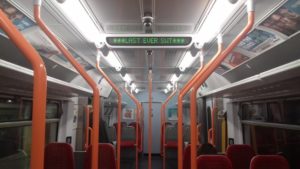 And in the middle of it all, with not a great deal of fanfare but a few little touches, Stagecoach bowed out and handled the franchise torch to
And in the middle of it all, with not a great deal of fanfare but a few little touches, Stagecoach bowed out and handled the franchise torch to 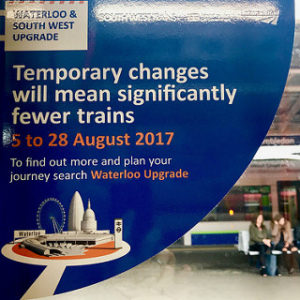 In January 2016, it was reported that my local train operator, South West Trains had
In January 2016, it was reported that my local train operator, South West Trains had  South West Trains been the only private operator of the service since I moved to London. Prior to 4 Feb 1996 the service was public, part of British Rail’s Network South East operations. I imagine over the coming months somebody may repaint the train. I’m sure there will be stickers over the old logo and I imagine that there will lots of promotion for new a shiny new web site and some new social media feeds.
South West Trains been the only private operator of the service since I moved to London. Prior to 4 Feb 1996 the service was public, part of British Rail’s Network South East operations. I imagine over the coming months somebody may repaint the train. I’m sure there will be stickers over the old logo and I imagine that there will lots of promotion for new a shiny new web site and some new social media feeds.
